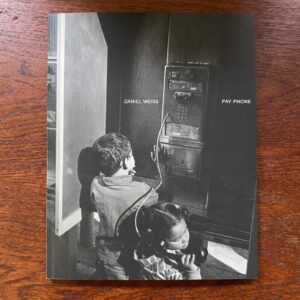JTF (just the facts): A total of 20 black and white photographs and 9 contact sheets, variously framed and matted, and hung in the winding main gallery space and the reception area. 14 of the black and white works are gelatin silver prints, ranging in size from 11×14 to 30×40. The other 4 black and white works are archival pigment prints, ranging in size from 42×52 to 44×57. The 9 contact sheets are 8×10 gelatin silver prints. No edition information was available for any of the prints. There are also 2 gelatin silver prints of Bassman taken by her husband, Paul Himmel. All of the works were taken between 1945 and the 1960s, except one new image from 2012. A monograph of this body of work was recently published by Abrams (here). (Installation shots at right.)
Comments/Context: The late resurgence in the photographic career of Lillian Bassman is a story that is probably already well known to readers here. An influential fashion photographer for Harper’s Bazaar in the 1950s and 1960s, she was largely forgotten until roughly a decade ago, when some of her old negatives were rediscovered and she began to reprint and reinterpret them, often in larger sizes. A collection of her many photographs of lingerie models has recently been gathered into a monograph, but her death last winter has added a more melancholy note to this accompanying show.
Bassman’s images of women’s lingerie capture a wide spectrum of forms and styles: corsets and girdles, slips and nightgowns, underwear and pajamas. She was fond of seductive silhouettes, with arms raised and faces averted, drawing our attention to anonymous feminine curves and confident stances. But the darkroom was where the real magic occurred. Bleaching and burning (and later making digital manipulations), she broadened the contrasts to harsher blacks and whites, increased the graininess to an expressionistic, painterly blur, and heightened shadows and softened highlights to transform her models into stylized, monochrome representations of elegance and glamour. The resulting images have a dreamy, ephemeral quality, the wispy grace of a pose threatening to disappear in a blink of an eye.
What makes these pictures work is their self-assured boldness. In many ways, the lingerie is just a subject matter detail; what is being offered is a combination of poise and coolness, made stronger by the punch of the black and white polarization. As Bassman extended the range of her signature aesthetic techniques, she took her images to new levels of sophistication and femininity, and further separated them from mainstream fashion photography.
Collector’s POV: Surprisingly, the prints in this show are not for sale; it seems that since the photographer’s recent death, the arrangements with the estate have not been finalized. Bassman’s prints (both vintage and later, generally 11×14 or smaller) have been available from time to time in the secondary markets, with prices ranging between $4000 and $15000 in the past few years. Her larger pigment prints and other recent works are likely only available at gallery retail prices.








